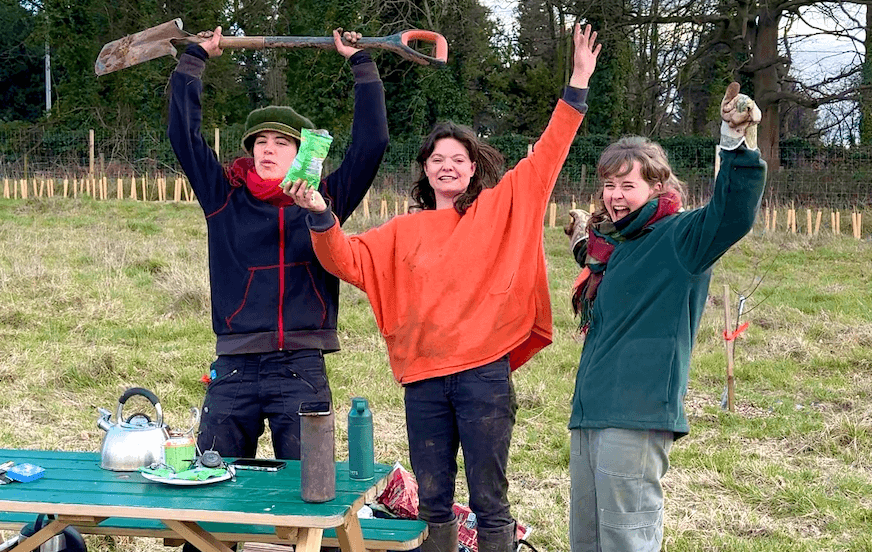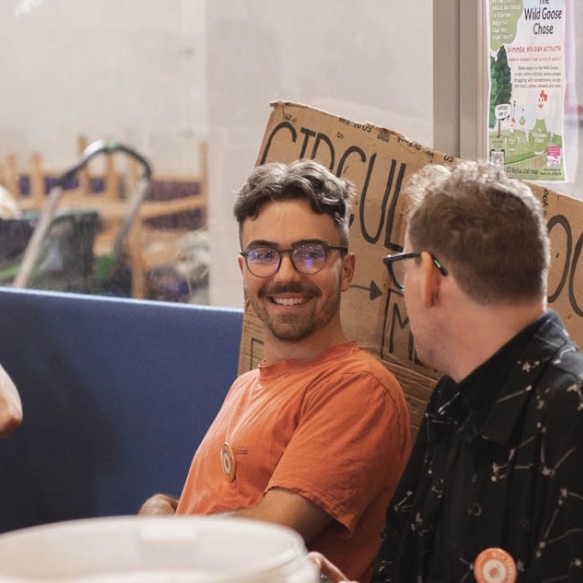When Organic Food Became a Threat: How Power Rewrote the Food System
- Alex Montgomery
- Oct 24
- 4 min read
Organic and regenerative farming were never just about growing food.
They were, and still are, about power, soil, and who gets to define what “good food” means.
As organic food became more popular, a quiet counter-movement emerged, not led by farmers or consumers, but by corporations, lobbyists, and media voices determined to protect the industrial status quo.
This is the story of how “organic” was softened, reshaped, and sold back to us, and why rebuilding soil democracy matters more than ever.

From Soil to Commodity
The roots of the organic backlash reach back centuries.
As Professor Tim Lang explains, Britain, one of the first industrial nations, made a key decision: not to feed itself.
Instead, it relied on imported food from across its empire, using new technologies, cheap labour, and colonial trade to fill its cities.
Food was transformed from a shared human necessity into a global commodity.
By the 20th century, the “cheap food” model had become a political promise, but only because its real costs were hidden: soil depletion, pollution, and the loss of farming livelihoods.
That legacy still defines the modern food system: cheap calories, expensive consequences.
1️⃣ Scientific Capture: When Funding Shapes “Truth”
By the 2000s, as organic food sales grew, a pattern began to emerge in the media.
Studies funded by agribusiness started claiming there was “no nutritional difference” between organic and conventional produce.
These studies ignored soil health, biodiversity, and long-term ecosystem benefits, the real pillars of organic agriculture. Instead, they focused narrowly on vitamins and antioxidants, metrics that favour industrial methods.
As food policy expert Marion Nestle notes, industry-funded research is several times more likely to deliver results favourable to sponsors.
This subtle bias shifted public debate away from regeneration toward consumer choice:
“Is organic worth it?” replaced “How can we heal the soil?”

2️⃣ Policy Dilution: Redefining “Organic”
When the science softened, policy followed.
In 2023, a U.S. court ruling allowed hydroponic crops grown without soil to be certified organic.
Across Europe, lobbying by large-scale producers pushed for similar relaxations, enabling intensive monocultures and imported inputs under the same green label.
Soil, once the living heart of the organic movement, was quietly written out of its own story.
The word “organic” became a branding tool, detached from the ecological and ethical roots that gave it meaning.

3️⃣ Framing Organics as “Elitist”
When science and policy couldn’t fully contain the organic movement, another tactic emerged: rebranding it as elitist.
PR campaigns and opinion pieces began painting organic food as “a luxury for the privileged.”
But cheap food only looks cheap because its true costs are externalised from polluted waterways and declining biodiversity to the public health impacts of pesticide exposure and ultra-processed diets.
Framing organics as elitist divides people. It shifts responsibility away from policy and industry and turns a collective issue into an individual lifestyle choice.
4️⃣ Greenwashing and Acquisition: “If You Can’t Beat It, Buy It”
When resistance failed, Big Food simply bought in.
Over the past two decades, large corporations have acquired independent organic brands and reshaped them to fit industrial production systems.
Farms once rooted in soil health and community became scaled-up operations, feeding global supply chains rather than local ecosystems.
The packaging stayed green, but the principles were diluted.
5️⃣ Reclaiming Soil Democracy
All these tactics, media spin, policy dilution, and greenwashing stem from the same story: a food system that treats soil as a resource, not a relationship.
Regeneration means changing that story. It means returning agency to the land, to local growers, and to the communities that feed themselves.
At Generation Soil, we see this not as nostalgia but as innovation, building modern systems rooted in reciprocity rather than extraction.
When we compost, when we listen to soil life, when we teach others to grow, we’re rebuilding the foundations of food democracy from the ground up.
Why This History Matters Now
The industrial food system didn’t appear overnight.
It was built through centuries of policy choices, from the colonial import trade to 20th-century “cheap food” policies that separated people from the sources of nourishment.
Understanding that history helps us imagine a different future:
Shorter, circular supply chains that keep nutrients local.
Community composting projects that reconnect people to soil.
Education and transparency that value ecological truth over marketing.
We can’t buy our way out of ecological collapse, but we can grow our way out together.

Join the Regeneration
At Generation Soil, we’re helping Bristol build a truly circular food system, one where waste becomes life again.
Let’s restore soil democracy where food, community, and ecology grow together.
References
Lang, T. (2025). Food Policy Is Progressive – Brunel University Lecture Notes.
Nestle, M. (2018). Unsavory Truth: How Food Companies Skew the Science of What We Eat. Basic Books.
Rao, M. et al. (2022). “Assessing Bias in Industry-Funded Nutrition Research.” Public Health Nutrition.
Cornucopia Institute (2005). Reader Beware: Understanding the Corporate Attack on Organic Farming.
Wicked Leeks (2024). “How Big Food Captured ‘Organic.’”
National Ag Law Center (2023). “Hydroponic Organics Ruling and USDA Certification.”




Comments